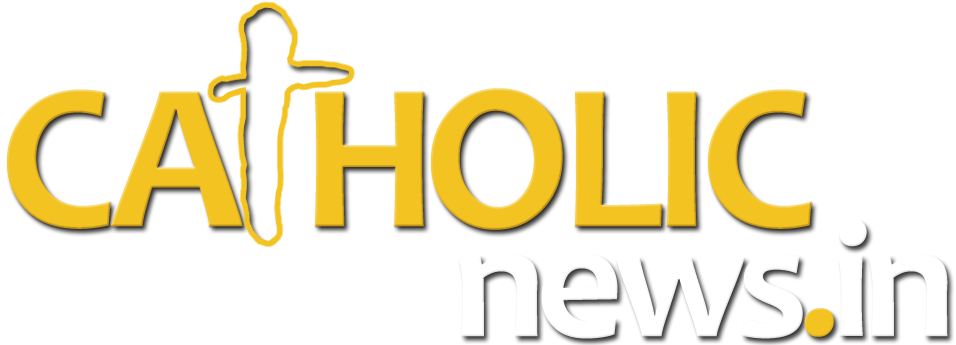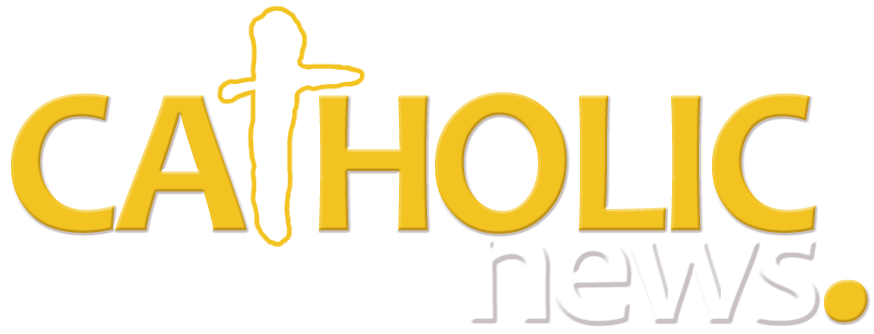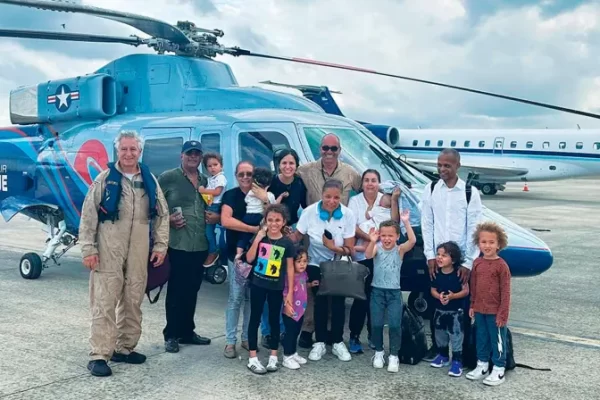Two American Knights of Columbus’ bravery could save 143 people from violence in Haiti. They flew three helicopter rescue missions between March and April to Port-au-Prince, the country’s capital.
Captain Anthony Marinello and his co-pilot Benny Matos flew their Sikorsky S-76 helicopter at night, to enter a volatile region marked by conflict. Since the beginning of March, the instability of the government and the free actions of Haitian criminal gangs unleashed a wave of violence and death in the Caribbean country, leaving thousands dead and displaced.
Since then, the political and social situation in Haiti worsened exponentially. There, Catholics live their faith in an extremely heroic way, overcoming all kinds of difficulties.
It was around 7:30 pm (local time) on 10 March when Marinello received a call from Congressman Cory Mills’ team: “Can you fly on a rescue mission for Americans in Haiti? He would have to go out tonight,” he heard incredulously over the phone.
At first, he didn’t believe the request was real. Criminal gangs had forced the closure of Port-au-Prince airport and hundreds of American citizens were trapped. Among them was renowned writer Mitch Albom, who founded an orphanage in the Haitian capital.
Someone from Albom’s entourage contacted US Representative Lisa McClain to get help and she, in turn, contacted Mills, who already had experience rescuing compatriots in difficult situations. This first mission would bring back 10 Americans.
The congressman called 12 pilots before Marinello, who were unable or unwilling to help. “I thought about it for a moment and said, ‘Sure, I think we can do it,’” the Knight of Columbus recalled. “So I left my dinner in the refrigerator and headed to the airport,” he added.
Before leaving, he called Matos—his close friend and colleague for more than two decades—without him, he wasn’t going to fly this mission. After thinking about it and gaining courage from his training as a Knight of Columbus, Matos accepted and Marinello began planning his route and preparing the helicopter.
The Sikorsky S-76 departed with a crew of 4, including US Army Special Forces veteran Brian Young, around 10:30 pm on 10 March. Cory Mills was the other crew member. After stopping in the Bahamas and the Turks and Caicos Islands to refuel, they arrived in Puerto Plata (Dominican Republic) early the next morning.
The early morning sun prevented a covert operation and the crew did not want to risk attracting the attention of criminal gangs. Therefore, they decided to take the rest of the day to plan a new extraction point with Albom. They then flew to Santo Domingo (Dominican Republic) to refuel and asked the United States Department of State and the Dominican Foreign Minister for permission to fly to Haiti.
Before leaving Santo Domingo, Matos, a deacon at Our Lady Queen of Apostles Parish in Royal Palm Beach, prayed and blessed the group.
“The four of us joined our hands and bowed our heads,” Marinello recalls. “When we looked up, we saw that the entire terminal—virtually every person in the building—had stopped to watch us pray. They didn’t know exactly what we were going to do, but they knew something was happening.”
At two in the morning, they took off to fly the 30-minute journey between Santo Domingo and the new extraction point. Due to this last-minute change, Marinello only had a satellite image of the place, so the landing would be complicated.
To help him find the location, he instructed the evacuees to listen for the helicopter and then “blink all the lights in the house like a Christmas tree.” It happened like that. The pilots had been trained to make 2 or 3 reconnaissance turns before landing in an unknown location, especially at night, to detect power lines or other structures that could endanger the aircraft.
Marinello decided there was no time for that—Port-au-Prince is essentially a war zone—so they would land blind. Mills and Young jumped out of the helicopter as soon as it touched down, shouting a series of orders.
“Are all 10 here? Everyone inside? All alright? “Does everyone have passports?” Albom recorded in the Detroit Free Press. “LET’S GO!” the crew shouted. The rescue, from landing to takeoff, lasted only 67 seconds.
Marinello flew to Barahona airport (Dominican Republic). The evacuees would take a three-hour airlift to Santo Domingo, from where they flew back to the United States.
The exhausted crew returned home the next morning, but their rest was short-lived. A few days later, the Florida state government contacted Marinello to carry out a second rescue mission, this time coordinated with Haitian authorities.
Between 400 and 600 Floridians were still trapped in Haiti. On its second trip, the crew of the Sikorsky S-76 rescued 14 more people, but not before experiencing a taste of the violent chaos that had engulfed Port-au-Prince.
At a United Nations landing zone in the city, an armed group of Haitians tried to prevent people being evacuated from being taken away. Matos struggled to get the helicopter up.
“I had to push one guy and hit another guy to get back into the helicopter,” he said. “I basically jumped in the helicopter and told Tony to go away. He wasn’t even wearing his seat belt when we took off,” he added.
Similarly, at the airport in the commune of Cap-Haïtien, where the evacuees would take a plane to the United States, Haitian officials fined them US$3,000 for allegedly taking off without authorization on their mission to the capital.
Marinello paid, only to be told, just as they were about to take off, that they had not paid enough.
“I looked at Benny and said, ‘Yeah, sure,’” Marinello says, laughing. “So we took off.”
After a short stay in Florida, during Easter, both pilots were summoned for a third trip, in which they were part of a small rescue fleet. Starting on April 8 and for a week, the duo executed between 3 and 5 missions in Port-au-Prince, picking up approximately 10 people per flight.
This time, things went smoothly. By April 19, more than 700 people had been evacuated from the capital. Marinello and Matos, who flew until April 14, were personally responsible for rescuing 143 of those people in their three trips.
The two Knights of Columbus avoided fanfare and downplayed their heroism. “When they call you, you have to go,” said Marinello. “Some jobs are more dangerous than others,” he added.
The pilot concluded by sharing that his wife asked him why he accepted these very dangerous missions. “Who is going to help them if I say no? I was the 13th helicopter company called. The 12 in front of me all said no. “So at what point do you say yes,” he replied.
“Sometimes you have to sacrifice and risk your life for others,” he stressed.
(Adapted and edited from ACI Prensa)



